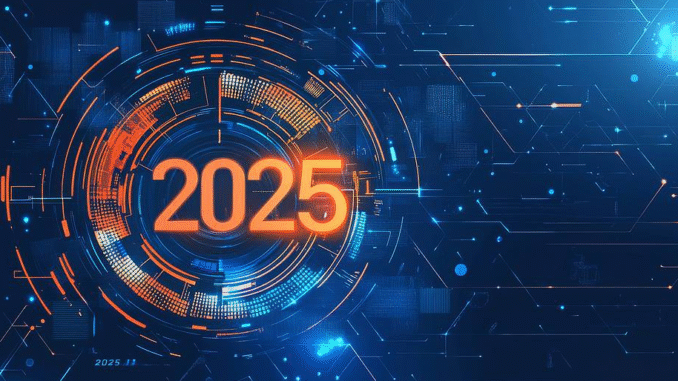
Top Tech Trends of 2025: What’s Shaping the Future Today
Technology is evolving at an unprecedented pace, reshaping the world around us and transforming the way we live, work, and interact. As we move through 2025, several innovative trends are emerging that promise to redefine industries, enhance productivity, and improve daily life. From advancements in artificial intelligence to the rise of sustainable technology, this year’s trends point toward a smarter, more connected future. Here are the top tech trends of 2025 that are shaping the future today.
1. Artificial Intelligence (AI) Becomes Smarter and More Accessible
AI continues to lead the charge in technological innovation, and in 2025, it’s not just about smarter algorithms—it’s about widespread integration. AI is now embedded in nearly every industry, from healthcare and finance to education and entertainment. What’s different this year is the rise of AI co-pilots and assistants, helping users draft emails, analyze data, write code, and even generate creative content.
Natural language processing (NLP) has significantly improved, allowing machines to understand and respond in human-like ways. Tools like AI chatbots, virtual tutors, and business automation platforms are becoming more affordable and user-friendly, making them accessible to small businesses and individuals, not just large enterprises.
2. Edge Computing Gains Momentum
Cloud computing has dominated the tech world for years, but in 2025, edge computing is becoming the go-to solution for real-time processing. Edge computing allows data to be processed closer to where it is generated—think sensors, IoT devices, and autonomous vehicles—reducing latency and improving efficiency.
This trend is especially important for technologies that require instant responses, like self-driving cars, remote surgeries, or industrial automation. By minimizing the need to send data to distant cloud servers, edge computing boosts speed and reliability, making critical systems faster and safer.
3. Quantum Computing Makes Practical Leaps
Once the stuff of science fiction, quantum computing is stepping into the real world in 2025. Companies like IBM, Google, and startups in the quantum space are pushing boundaries by achieving quantum advantage—the point where quantum computers outperform classical ones in specific tasks.
While still not mainstream, quantum computing is showing promise in complex problem-solving, such as drug discovery, financial modeling, and cryptography. Governments and corporations are investing heavily in this tech, preparing for a future where quantum power becomes a competitive edge.
4. 5G and Beyond: The Rise of 6G Preparation
The rollout of 5G networks brought high-speed mobile internet and lower latency. Now, in 2025, we’re seeing the groundwork being laid for 6G. Researchers and tech companies are beginning to define what the next generation of wireless communication will look like, aiming for speeds up to 100 times faster than 5G.
In the meantime, 5G is enabling new innovations in real-time gaming, augmented reality (AR), smart cities, and telemedicine. Faster and more stable connections mean better remote collaboration, more reliable autonomous systems, and richer digital experiences.
5. Sustainable Tech Takes Center Stage
As climate concerns grow, green technology and sustainability are becoming core elements of innovation. In 2025, companies are prioritizing energy-efficient solutions, from carbon-neutral data centers to biodegradable electronics and eco-friendly materials.
Electric vehicles (EVs) are becoming more mainstream, supported by expanding infrastructure and battery innovation. Renewable energy sources, including solar, wind, and even hydrogen fuel, are being integrated with smart grids to optimize power consumption and reduce waste.
Tech giants are also focusing on circular economy models, emphasizing recycling, refurbishing, and reducing e-waste. Sustainability is no longer optional—it’s expected.
6. The Metaverse Evolves into Practical Applications
The hype around the metaverse may have cooled from its early buzz, but in 2025, it’s finding real use in sectors like education, training, healthcare, and remote work. Virtual environments are now being used for immersive learning, collaborative meetings, virtual events, and simulation-based training.
Rather than just entertainment, the metaverse is becoming a platform for productivity and engagement. With VR headsets becoming lighter and more affordable, and AR glasses improving in design and usability, mixed-reality experiences are entering classrooms, hospitals, and offices around the world.
7. Cybersecurity Gets Smarter with AI and Zero Trust
As digital threats become more sophisticated, cybersecurity is evolving rapidly in 2025. AI-powered security tools are being used to detect anomalies, identify vulnerabilities, and respond to threats faster than ever before.
The Zero Trust model—where no user or device is automatically trusted—is becoming the standard, especially for remote and hybrid work environments. Multi-factor authentication, biometric logins, and real-time threat analysis are crucial elements in modern digital protection strategies.
With rising concerns about data privacy, consumers are also becoming more aware of their digital rights, prompting stronger data protection regulations and transparent tech policies.
8. Robotics and Automation Revolutionize Industries
Automation is reaching new heights, thanks to advanced robotics, AI integration, and machine learning. In 2025, robots aren’t just assembling products in factories—they’re cleaning homes, delivering groceries, monitoring crops, and assisting in hospitals.
In agriculture, autonomous drones and robots are being used for planting, harvesting, and soil analysis. In healthcare, robotic assistants are supporting surgeries and elderly care. These innovations are helping to solve labor shortages and improve productivity across the board.
9. Personalized Tech and Wearables Expand Health Monitoring
Wearable technology continues to grow in popularity and capability. In 2025, smartwatches and health trackers are more than fitness tools—they’re health monitoring devices that can detect irregular heartbeats, monitor blood sugar levels, track sleep patterns, and even help manage chronic conditions.
AI integration means wearables can now provide personalized insights and recommendations based on real-time health data. This empowers users to take proactive steps toward wellness and allows doctors to provide better remote care.
The future of healthcare is becoming more preventive, data-driven, and personalized, and wearable technology is at the heart of that transformation.
10. Generative AI Fuels Creative Industries
The rise of generative AI tools is revolutionizing how content is created. From writing articles and generating code to composing music and designing graphics, these tools empower creators with new levels of productivity and experimentation.
In 2025, industries like marketing, game development, filmmaking, and e-commerce are leveraging generative AI to develop faster and with fewer resources. AI models can now mimic human styles, learn from preferences, and collaborate creatively with users.
Though there are concerns about originality and copyright, generative AI is undoubtedly reshaping the creative landscape and opening doors for new types of expression.
Conclusion
The year 2025 is proving to be a turning point in the tech world. Innovation is no longer limited to research labs and tech giants—it’s becoming a part of everyday life. From AI and quantum computing to sustainable tech and personalized healthcare, today’s advancements are building the foundation for a smarter, more connected, and more sustainable future.
Staying informed about these trends is essential, whether you’re a business leader, a tech enthusiast, or simply someone curious about what tomorrow holds. As we continue to push the boundaries of what’s possible, one thing is clear: the future is being shaped today.

